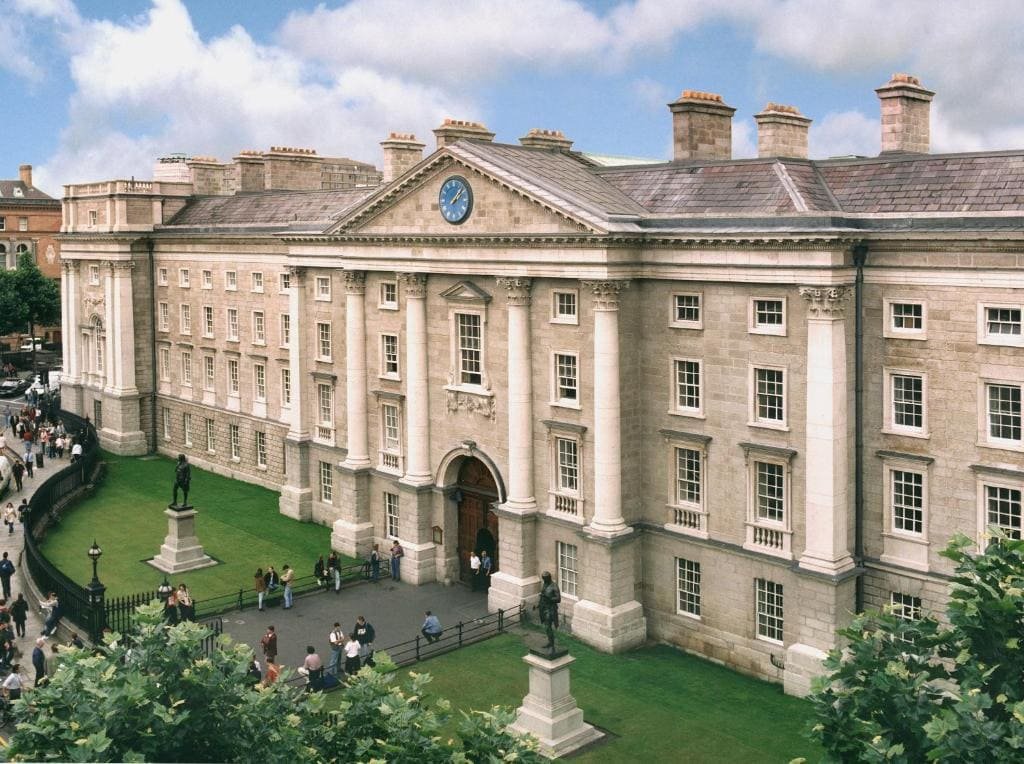This Dublin guide will explore the best that Dublin has to offer, from iconic attractions to local favorites, offering practical travel tips and accommodation advice to help you plan the perfect visit.
Planning a trip to Dublin can be overwhelming, but with Travels Jinn, you can easily organize and customize your itinerary, ensuring a memorable experience tailored to your interests.
Historical Overview of Dublin
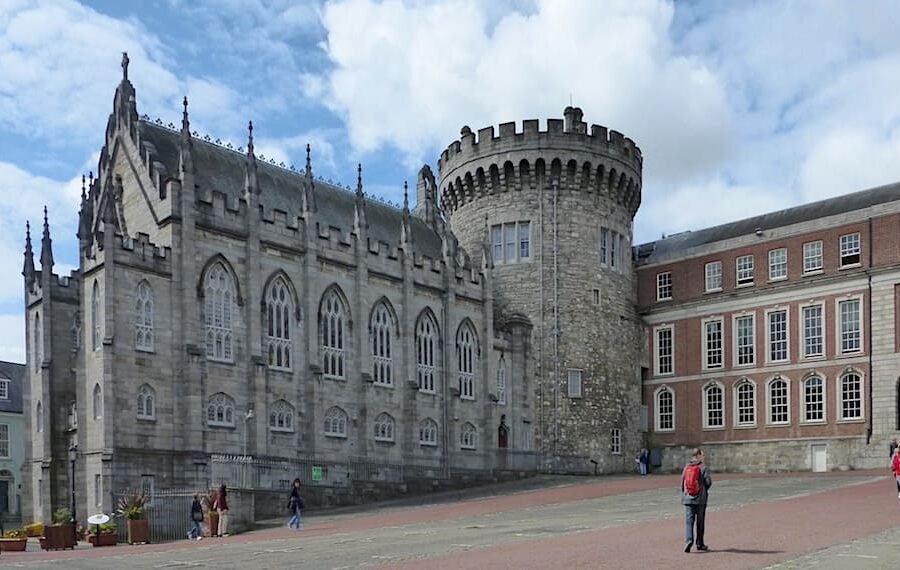
Dublin’s history is a tapestry of Celtic origins, Viking invasions, and British rule, which has shaped its architectural and cultural landscape. From the cobblestone streets of Temple Bar to the grand Georgian squares, the city’s past is woven into its present. Key sites like Dublin Castle and St. Patrick’s Cathedral offer a window into its storied past.
Key Historical Milestones
9th Century – Viking Settlement: Dublin’s origins trace back to the 9th century when Vikings established a settlement called “Dubh Linn,” meaning “Black Pool.” This marked the beginning of Dublin as a significant urban center.
1171 – Norman Invasion: The Normans, led by Strongbow, captured Dublin, marking the start of English influence over the city, which would last for centuries.
16th Century – English Reformation: Under King Henry VIII, Dublin became a focal point for the English Reformation in Ireland, with the dissolution of monasteries and the establishment of the Church of Ireland.
1916 – Easter Rising: Dublin was the epicenter of the Easter Rising, a pivotal event in the struggle for Irish independence. Key sites like the General Post Office (GPO) became symbols of Irish resistance.
1922 – Irish Free State: Following the War of Independence, Dublin became the capital of the newly established Irish Free State, marking its transition to independence from British rule.
1990s – Economic Boom (“Celtic Tiger”): Dublin experienced rapid economic growth, transforming the city into a modern, cosmopolitan capital with significant international influence.
Cultural and Architectural Legacy of Dublin
Dublin’s cultural and architectural legacy is a rich tapestry woven from its long and storied history. The city’s architecture reflects its complex past, with influences from Norse, Norman, and Georgian eras all present within the urban landscape. Viking settlers originally established Dublin, and their legacy remains visible in the city’s layout and place names. The Normans, who followed in the 12th century, left their mark with imposing structures like Dublin Castle, which still stands as a symbol of their dominance.
The Georgian era brought about some of Dublin’s most iconic architectural features, including grand squares, terraces, and the famous Dublin doors, with their vibrant colors and fanlight windows. These elements contribute to Dublin’s distinctive aesthetic, making it a living museum of architectural evolution.
Culturally, Dublin is celebrated for its literary legacy, being the birthplace of renowned writers like James Joyce, W.B. Yeats, and Samuel Beckett. The city’s vibrant literary scene is honored through numerous festivals, museums, and landmarks, such as the Dublin Writers Museum and the James Joyce Centre, cementing its status as a UNESCO City of Literature.
Dublin Guide: Top Attractions
Trinity College and the Book of Kells
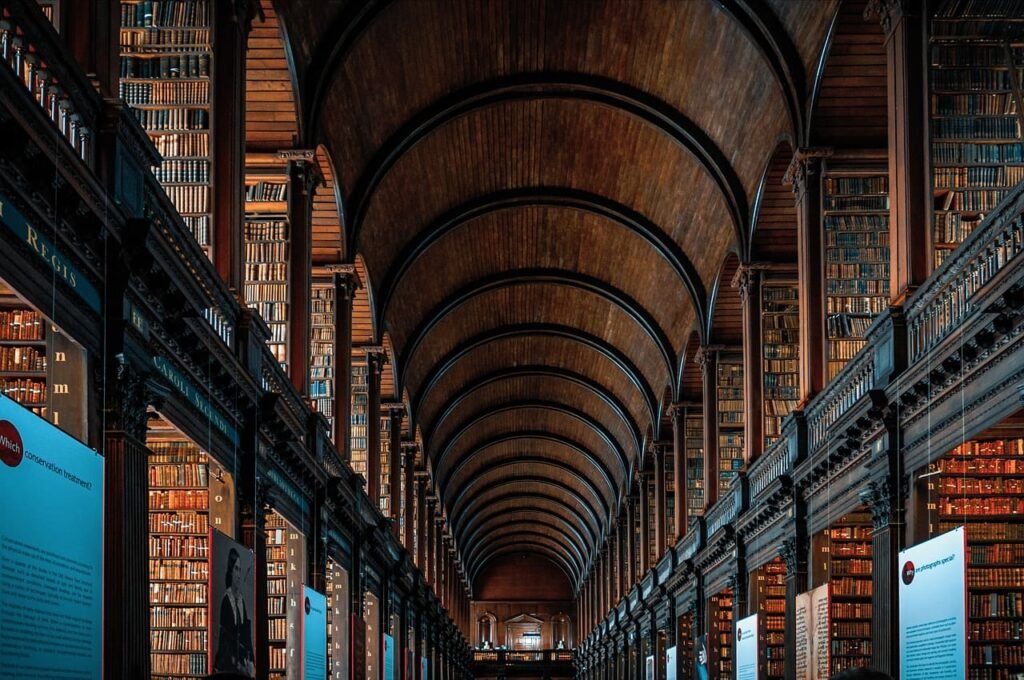
Trinity College Dublin, established in 1592, is Ireland’s oldest university and a stunning example of the country’s academic heritage. The crown jewel of the campus is the Book of Kells, a beautifully illuminated manuscript dating back to around 800 AD. This ancient text, considered one of the most important cultural treasures of Ireland, contains the four Gospels in Latin, intricately decorated with Celtic art. Visitors can view the Book of Kells in the college’s Old Library, which also houses the Long Room, a breathtaking hall lined with over 200,000 of the library’s oldest books. A visit here is a journey into the heart of Ireland’s medieval and scholarly history.
Guinness Storehouse
No trip to Dublin is complete without a visit to the Guinness Storehouse, the birthplace of Ireland’s world-famous stout. Located at St. James’s Gate Brewery, the Storehouse is a seven-story experience that delves into the history, art, and science behind the brewing of Guinness. Visitors can explore interactive exhibits that trace the evolution of the brand and learn about the brewing process from water to barley. The tour culminates in the Gravity Bar, where you can enjoy a perfectly poured pint of Guinness while taking in 360-degree views of Dublin’s skyline. The Guinness Storehouse is more than a brewery; it’s a celebration of Ireland’s most iconic export.
Dublin Castle
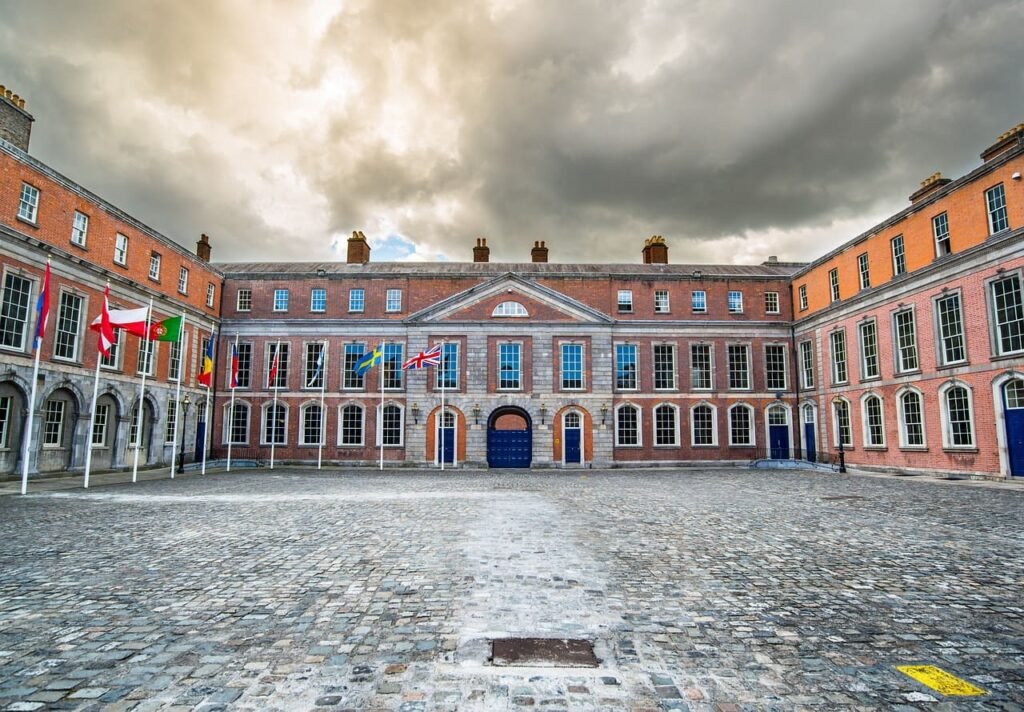
Dublin Castle is a symbol of the city’s complex history, serving as the seat of British rule in Ireland for over 700 years. Originally built in the early 13th century, the castle has been transformed through the centuries, blending medieval, Georgian, and Gothic architectural styles. Visitors can explore the State Apartments, where British viceroys once resided, and see the Chapel Royal, with its stunning Gothic Revival architecture. The castle’s grounds also include the Chester Beatty Library, a museum showcasing an extraordinary collection of manuscripts, rare books, and decorative arts. Dublin Castle stands as a testament to the city’s resilience and historical significance.
St. Patrick’s Cathedral
St. Patrick’s Cathedral, founded in 1191, is the largest church in Ireland and an enduring symbol of Dublin’s religious heritage. Built on the site where St. Patrick is said to have baptized converts to Christianity, the cathedral is a masterpiece of Gothic architecture. Visitors can explore its magnificent interior, which includes stunning stained glass windows, intricate stone carvings, and the tomb of Jonathan Swift, author of Gulliver’s Travels and former Dean of the cathedral. St. Patrick’s Cathedral remains an active place of worship and a vital part of Dublin’s cultural landscape, offering insight into the city’s spiritual and architectural history.
Hidden Gems in Dublin
Chester Beatty Library
Tucked away in the grounds of Dublin Castle, the Chester Beatty Library is one of the city’s most underrated attractions. This museum and library house an exceptional collection of manuscripts, rare books, and ancient texts from around the world. Visitors can explore exhibits that span centuries and continents, from the earliest known copies of the four Gospels to exquisite Chinese, Japanese, and Islamic manuscripts. The Chester Beatty Library is a cultural treasure that offers a deep dive into the world’s artistic and religious traditions. For those seeking a quieter, more contemplative experience in Dublin, this library is a must-visit.
St. Michan’s Church
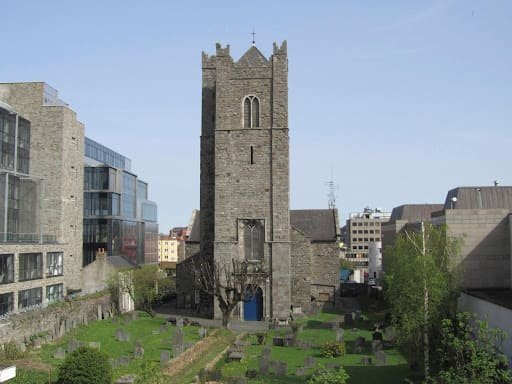
St. Michan’s Church, located on the north side of the River Liffey, offers a glimpse into a darker, more mysterious side of Dublin’s history. Founded in 1095, the church is one of the city’s oldest, and its crypts are famous for their well-preserved mummified remains. Visitors can take a guided tour of the crypts, where they’ll encounter centuries-old bodies, including the “Crusader,” a six-and-a-half-foot-tall mummy believed to have fought in the Crusades. The eerie atmosphere and the stories of the crypts make St. Michan’s Church a fascinating hidden gem for those interested in Dublin’s macabre history.
Iveagh Gardens
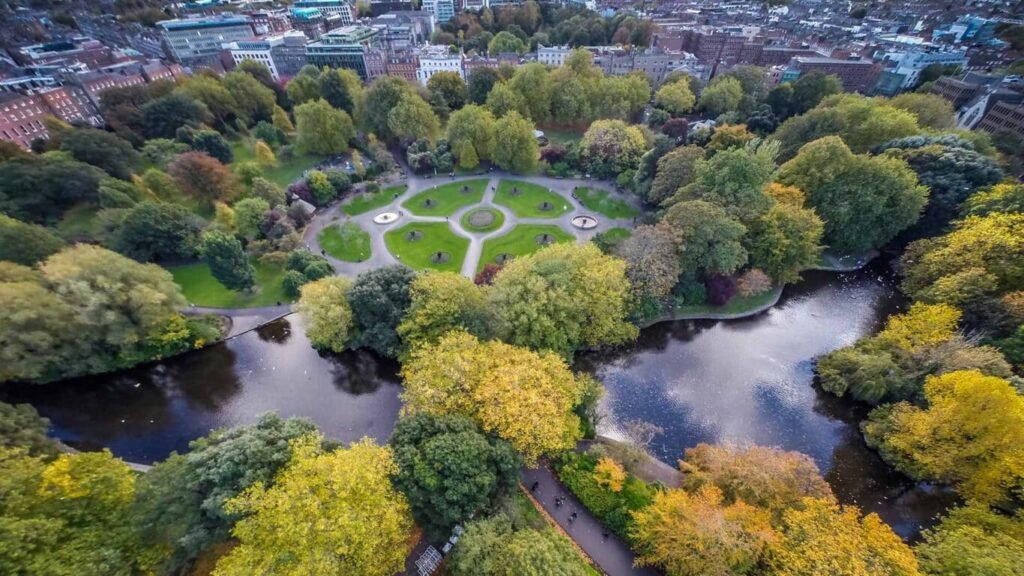
For those looking to escape the hustle and bustle of Dublin’s city center, Iveagh Gardens offers a serene and beautifully landscaped retreat. Often referred to as Dublin’s “hidden gardens,” Iveagh Gardens are less crowded than the more famous St. Stephen’s Green, but no less beautiful. The gardens feature a mixture of formal and informal landscapes, including a maze, a rosarium, and a stunning waterfall. Originally designed in the 19th century, Iveagh Gardens provide a peaceful setting for a leisurely stroll or a quiet moment of reflection, making them one of Dublin’s best-kept secrets.
Things to Do: Dublin Guide
Guided City Tours and Self Guided Adventures
One of the best ways to explore Dublin is by taking a guided city tour, which can be tailored to different interests, such as history, literature, or local folklore. Walking tours are especially popular, with routes that take you through the cobblestone streets of the medieval city, past the Georgian architecture of Merrion Square, and into the heart of Temple Bar. These tours often include visits to iconic sites such as Dublin Castle, St. Patrick’s Cathedral, and Trinity College, where you can view the famous Book of Kells. For those interested in more niche experiences, Dublin also offers ghost tours, literary pub crawls, and food-focused walking tours that delve into the city’s rich culinary heritage.
If you want to to visit Dublin by yourself you can use Travel itinerary to personalize your trip and Travels Guide to get all the info you need!
Dublin’s Pubs and Nightlife
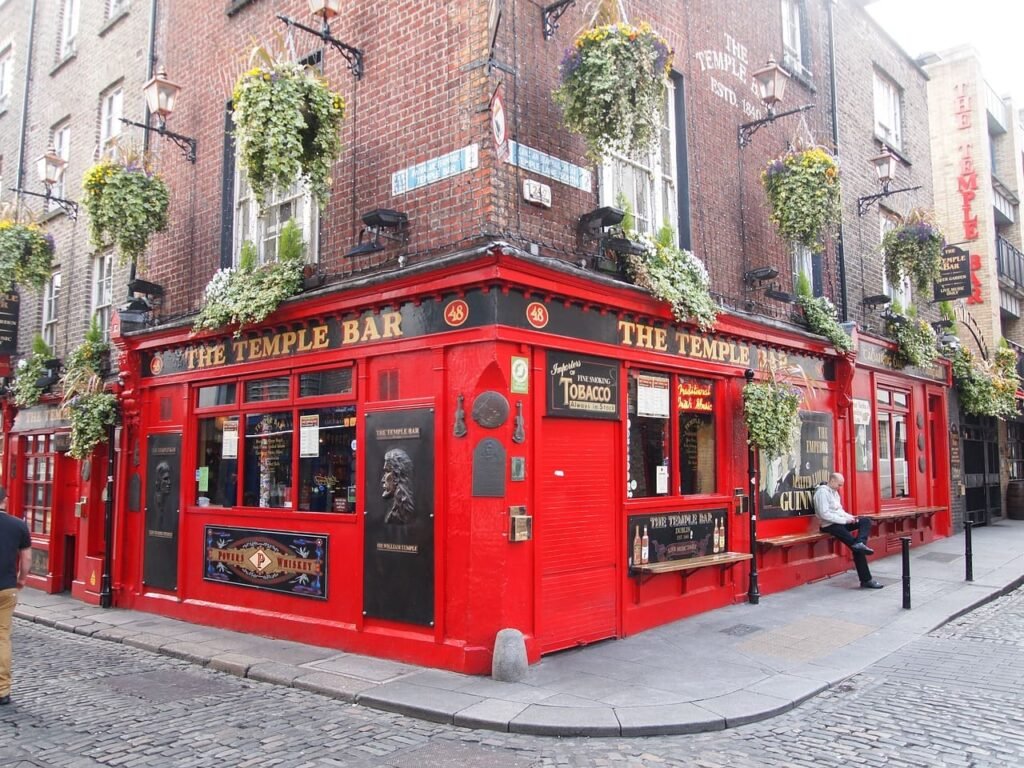
Dublin is world-renowned for its pub culture, with a seemingly endless number of historic and modern pubs to choose from. A night out in Dublin isn’t complete without a visit to one of these establishments, where you can enjoy a pint of Guinness, listen to live traditional Irish music, and experience the warmth and friendliness of the local people. The Temple Bar area is a popular spot for both tourists and locals, offering a wide variety of pubs, each with its own unique atmosphere. For a more historical experience, visit the Brazen Head, Dublin’s oldest pub, which dates back to 1198. Dublin’s nightlife is not limited to pubs; the city is also home to a vibrant club scene, with venues offering everything from electronic dance music to jazz.
Seasonal Events and Festivals
Dublin’s calendar is packed with seasonal events and festivals that cater to all interests. One of the most famous is Bloomsday, celebrated annually on June 16th, which honors James Joyce’s masterpiece Ulysses. On this day, locals and visitors alike dress in Edwardian costumes and participate in readings, performances, and walking tours that trace the steps of the novel’s protagonist, Leopold Bloom, through the city. Another popular event is the Dublin International Film Festival, held every February, which showcases the best in Irish and international cinema. The St. Patrick’s Day Festival in March is another highlight, featuring a vibrant parade, cultural events, and plenty of music and dancing throughout the city.
Art and Culture
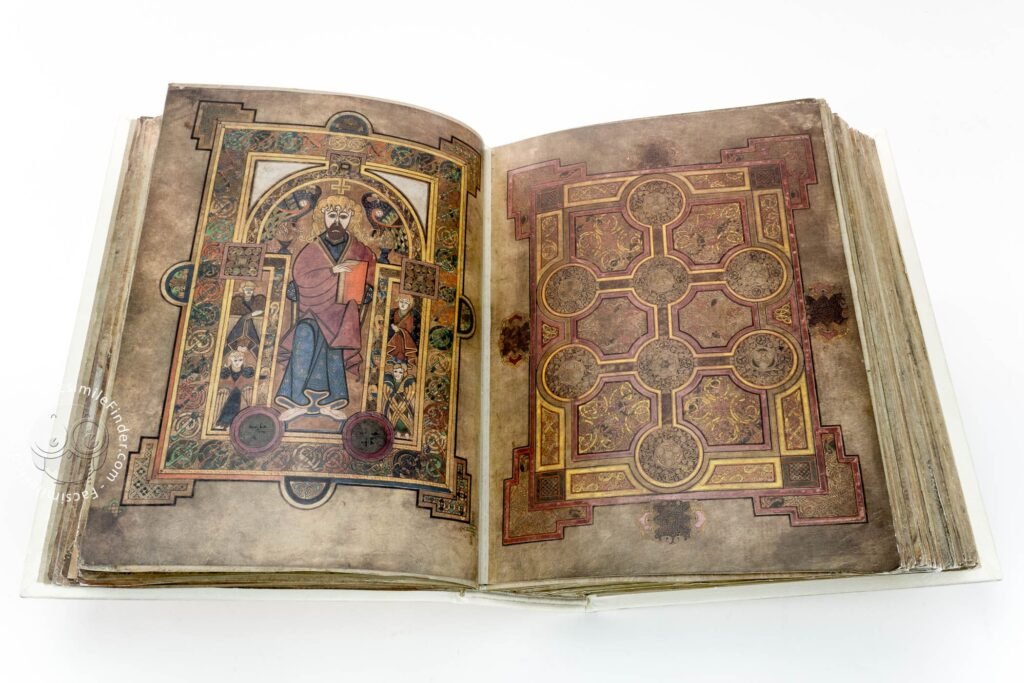
Dublin is a city steeped in art and culture, with a thriving creative scene that spans literature, music, visual arts, and theater. The National Gallery of Ireland, the Irish Museum of Modern Art, and the Hugh Lane Gallery are must-visits for art lovers, offering collections that range from classical masterpieces to contemporary works by Irish and international artists. Dublin is also known for its literary heritage, being the birthplace of writers such as James Joyce, Oscar Wilde, and Samuel Beckett. The Dublin Writers Museum and the James Joyce Centre are dedicated to preserving and promoting this literary legacy. For theater enthusiasts, Dublin offers a variety of performances, from traditional plays at the Abbey Theatre to contemporary productions at the Gate Theatre.
Dublin’s Street Art Scene
In recent years, Dublin has seen a surge in street art, transforming the city’s walls into vibrant canvases. The street art in Dublin ranges from large-scale murals to smaller, more intricate pieces, and can be found in neighborhoods like Temple Bar, the Liberties, and Smithfield. This urban art scene adds a dynamic and colorful dimension to the city, reflecting Dublin’s modern and creative spirit.
Outdoor Activities and Green Spaces
For those who enjoy the outdoors, Dublin offers plenty of green spaces and parks where you can relax and take in the beauty of the city. Phoenix Park, one of the largest enclosed public parks in Europe, is home to the Dublin Zoo, Áras an Uachtaráin (the residence of the President of Ireland), and herds of wild deer. St. Stephen’s Green, located in the heart of the city, is a popular spot for a leisurely stroll or a picnic. For a more active experience, the Dublin Mountains, located just a short drive from the city center, offer hiking and biking trails with stunning views of the city and the Irish countryside.
Dublin Guide to Food and Dining
Traditional Irish Cuisine
When in Dublin, indulging in traditional Irish dishes is a must. Irish cuisine is hearty and comforting, with dishes such as Irish stew, made with lamb or beef, potatoes, carrots, and onions, slow-cooked to perfection. Another classic is seafood chowder, a creamy soup filled with fresh fish, mussels, and clams, often served with homemade brown bread. For a true taste of Dublin, try coddle, a traditional Dublin dish made with sausages, bacon, onions, and potatoes, simmered in a savory broth. Many pubs and restaurants across the city serve these traditional dishes, often with a modern twist.
International Dining
Dublin’s culinary landscape is not limited to traditional Irish food; the city is also home to a wide variety of international restaurants. Whether you’re in the mood for Italian pasta, Japanese sushi, or Middle Eastern mezze, Dublin has something to satisfy every palate. The city’s multicultural population has contributed to the diversity of its dining scene, with neighborhoods like Ranelagh and Rathmines becoming hotspots for trendy eateries and cafes. Dublin is also known for its vibrant food markets, such as the Temple Bar Food Market and the Dublin Flea Market, where you can sample artisanal foods, fresh produce, and street food from around the world.
Craft Beer and Whiskey
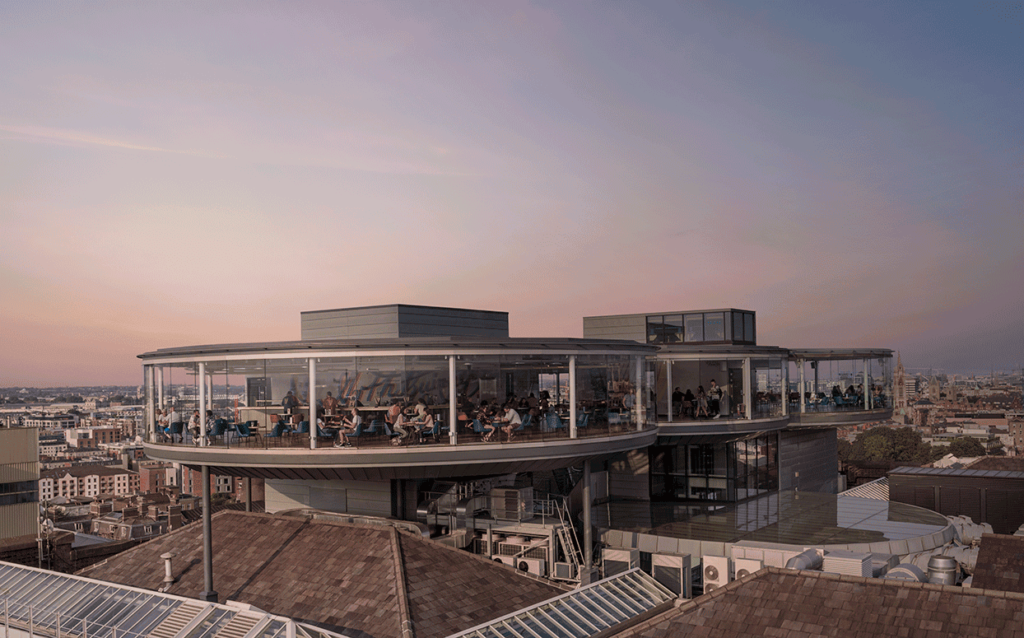
Dublin is not only famous for its pubs but also for its craft beer and whiskey. In recent years, the city has seen a resurgence of craft breweries, offering a wide range of locally brewed beers. The Dublin Craft Beer Festival, held annually, is a great opportunity to sample beers from local and international breweries. For whiskey enthusiasts, a visit to the Old Jameson Distillery or the Teeling Whiskey Distillery is a must. These tours offer insight into the distilling process and the chance to taste some of the finest Irish whiskeys. Dublin’s cocktail bars are also worth exploring, with many offering innovative drinks that blend traditional Irish spirits with modern mixology.
Here are some of the top restaurants in Dublin, known for their exceptional food and dining experiences:
- WILDE Restaurant
- Cuisine: International, Fusion
- Highlight: Known for its luxurious setting and creative dishes that blend international flavors.
- Assassination Custard
- Cuisine: Contemporary European
- Highlight: Popular for its innovative dishes and vibrant atmosphere.
- Grano
- Cuisine: Italian
- Highlight: Renowned for its handmade pasta and authentic Italian flavors.
- Chapter One
- Cuisine: Modern Irish
- Highlight: Michelin-starred restaurant offering refined modern Irish cuisine.
Dublin Guide: Accommodations
Luxury Accommodations
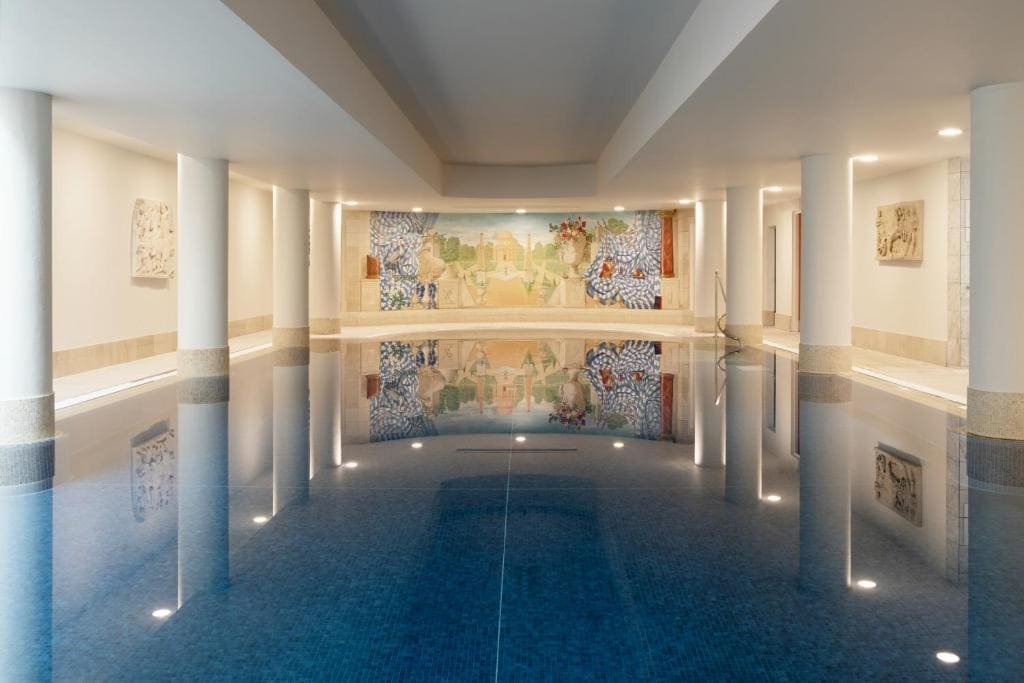
For a high-end experience, consider staying at The Merrion Hotel, one of Dublin’s most prestigious five-star establishments. Located in the heart of the city, The Merrion offers opulent rooms and suites, exquisite dining options, and a full-service spa. It is renowned for its exceptional service and elegant Georgian architecture, making it a top choice for those seeking luxury and comfort.
Other luxury options include:
- The Fitzwilliam Hotel Dublin: Known for its contemporary design and central location, it provides stylish accommodations and a chic restaurant
- Clontarf Castle Hotel: This unique hotel is set in a historic castle, blending medieval charm with modern amenities
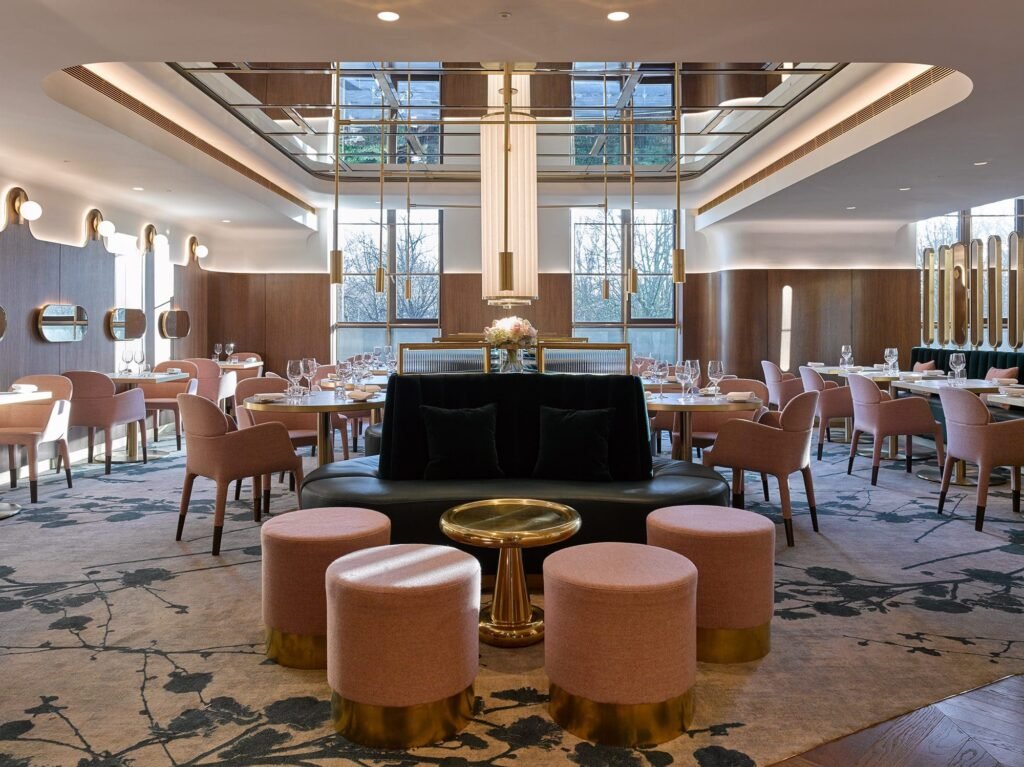
Budget-Friendly Stays
For those traveling on a budget, Dublin offers several affordable accommodations without compromising on quality. Areas like Smithfield provide good options with convenient access to public transport and local amenities. The Beckett Locke is a notable example, praised for its clean, reasonably priced rooms and friendly service
Boutique Hotels
For a more intimate and unique experience, consider staying in boutique hotels located in charming neighborhoods such as Dalkey. This area offers a quieter, more scenic environment while still being accessible to the city center. Boutique hotels here often feature personalized service and distinctive decor, providing a cozy retreat from the bustling city.
Transportation in Dublin
Public Transportation
Dublin’s public transport network includes buses, trams (Luas), and trains (DART), which cover the city and its suburbs effectively. The bus and tram systems are extensive, with frequent services connecting major areas and attractions. For a seamless travel experience, consider purchasing a Leap Card, which offers discounted fares on public transport.
Walking
The compact nature of Dublin’s city center makes walking a practical and enjoyable option. Many of the city’s main attractions, such as Trinity College, Dublin Castle, and St. Stephen’s Green, are within walking distance of each other. Exploring on foot allows you to fully appreciate the city’s architecture, street art, and vibrant street life.
Shopping in Dublin
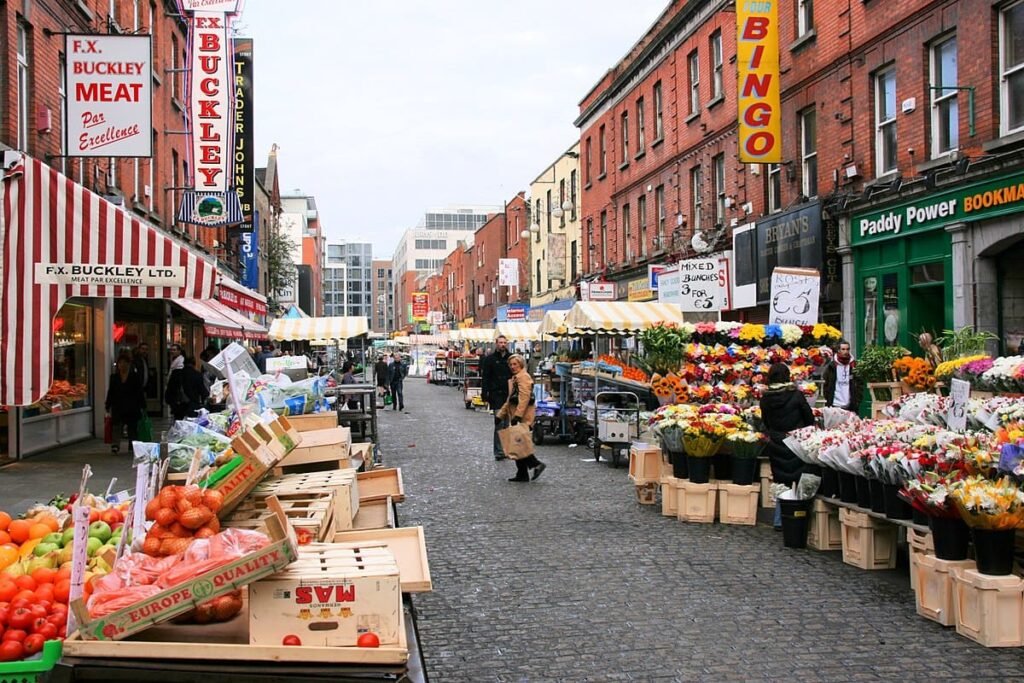
Prime Shopping Areas
Grafton Street
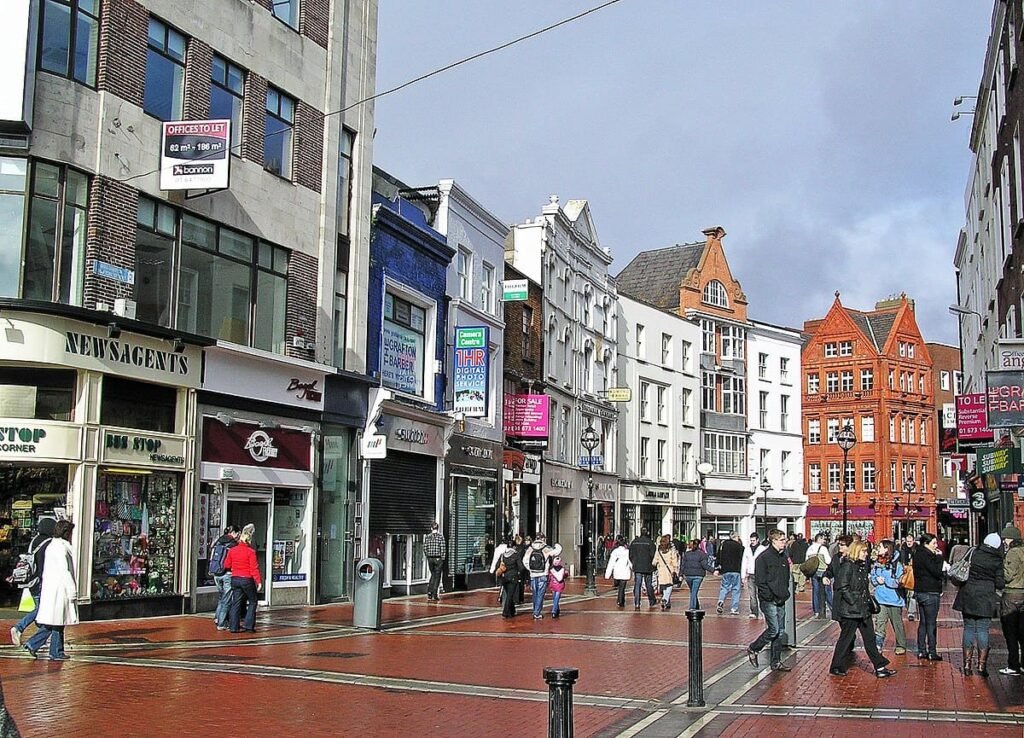
Grafton Street is Dublin’s premier shopping destination, bustling with activity and lined with an impressive array of stores. Here you’ll find global fashion brands such as Gucci, Louis Vuitton, and Zara. It’s also home to iconic Irish retailers like Brown Thomas, where you can explore high-end fashion, beauty products, and luxury goods.
Henry Street
On the north side of the River Liffey, Henry Street offers a more eclectic mix of shops. It features popular high-street brands like H&M and Debenhams, alongside smaller boutiques. The area is known for its vibrant atmosphere and accessibility, making it a favorite for both locals and tourists.
Weekend Markets
For a taste of local culture and unique finds, don’t miss Dublin’s weekend markets. George’s Street Arcade is a must-visit for its vintage shops, craft stalls, and quirky finds. The Dublin Flea Market offers everything from antique furniture to handmade crafts, providing a great opportunity to pick up distinctive souvenirs and gifts.
Discover Dublin: Nightlife and Entertainment
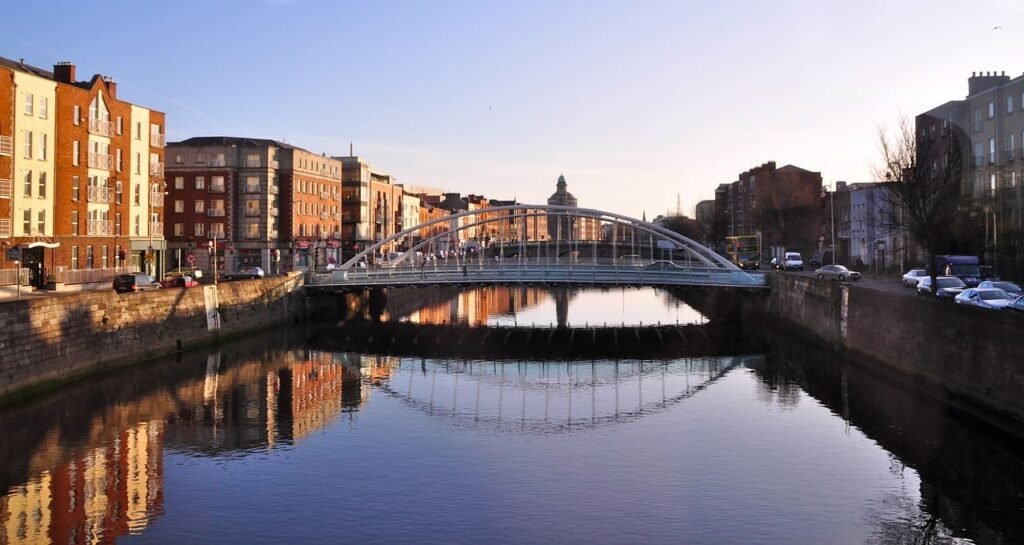
Temple Bar
The Temple Bar area is Dublin’s nightlife hub, famous for its lively pubs, traditional Irish music, and energetic atmosphere. The Temple Bar Pub is iconic for its extensive selection of whiskies and live music sessions. The area also features numerous pubs and clubs that stay open late, ensuring a bustling experience.
Authentic Experiences
For a more authentic Dublin experience, venture beyond Temple Bar. Rathmines is a lively suburb with a variety of local pubs and bars. Here you can enjoy a more laid-back atmosphere with live music, karaoke nights, and a range of traditional Irish dishes. The Bernard Shaw and The Portobello are popular spots known for their relaxed vibe and great social scene.
Practical Information & Tips to Visit Dublin
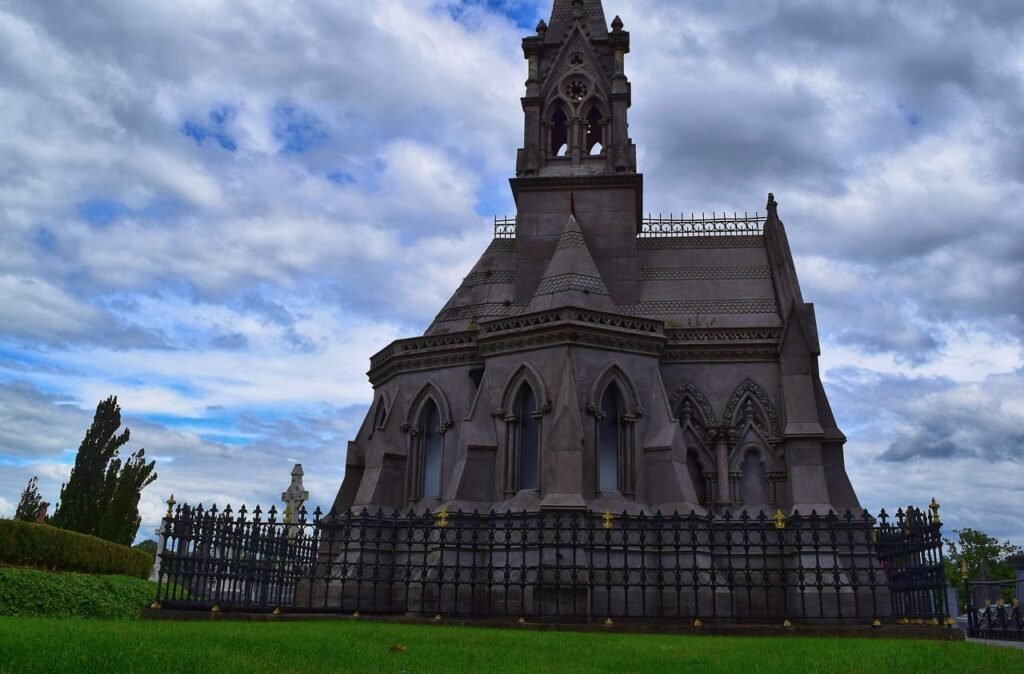
Safety and Communication
While Dublin is generally safe, it’s important to stay vigilant, especially in crowded areas like tourist spots and public transportation hubs. Keep emergency contact numbers handy and be aware of your surroundings.
Language and Currency
English is the primary language spoken in Dublin, but learning a few Irish phrases such as “Sláinte!” (Cheers!) can enhance your experience. The euro (€) is the currency used, and while tipping is customary, it is not obligatory. A tip of 10-15% is appreciated in restaurants and for services.
Best Time to Visit Dublin
Dublin is a year-round destination, but the best time to visit is during the warmer months from May to September. During this period, the weather is pleasant, and the city hosts numerous outdoor events and festivals. However, Dublin’s charm and cultural vibrancy make it a wonderful destination any time of year.
Day Trips and Excursions from Dublin
Cliffs of Moher
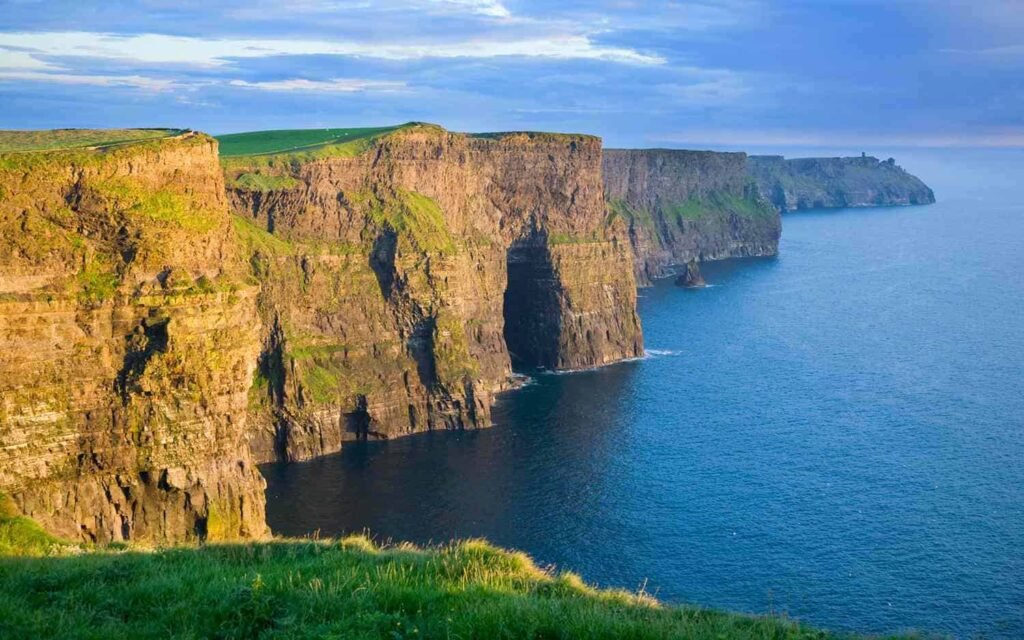
Overview
The Cliffs of Moher are one of Ireland’s most iconic natural landmarks. Rising up to 214 meters above the Atlantic Ocean, they stretch for 8 kilometers along the west coast of Ireland. The views are spectacular, offering panoramic vistas of the ocean and the Aran Islands.
Tour Options
- Guided Tours: Many operators offer guided tours from Dublin, which typically include transportation, a tour guide, and entrance fees. These tours provide informative commentary and ensure you make the most of your visit.
- Self-Guided: For a more flexible experience, you can rent a car and explore the Cliffs at your own pace. This allows for stops at scenic points and the charming village of Doolin.
Kilkenny
Overview
Kilkenny, known as the “Marble City,” is rich in medieval history. Its well-preserved architecture, including Kilkenny Castle and St. Canice’s Cathedral, offers a glimpse into Ireland’s past.
Highlights
- Kilkenny Castle: This 12th-century castle is a major attraction, surrounded by beautiful gardens and offering insights into the city’s history.
- Medieval Mile: A walk through the Medieval Mile will take you past historical buildings, charming shops, and traditional pubs.
Wicklow Mountains
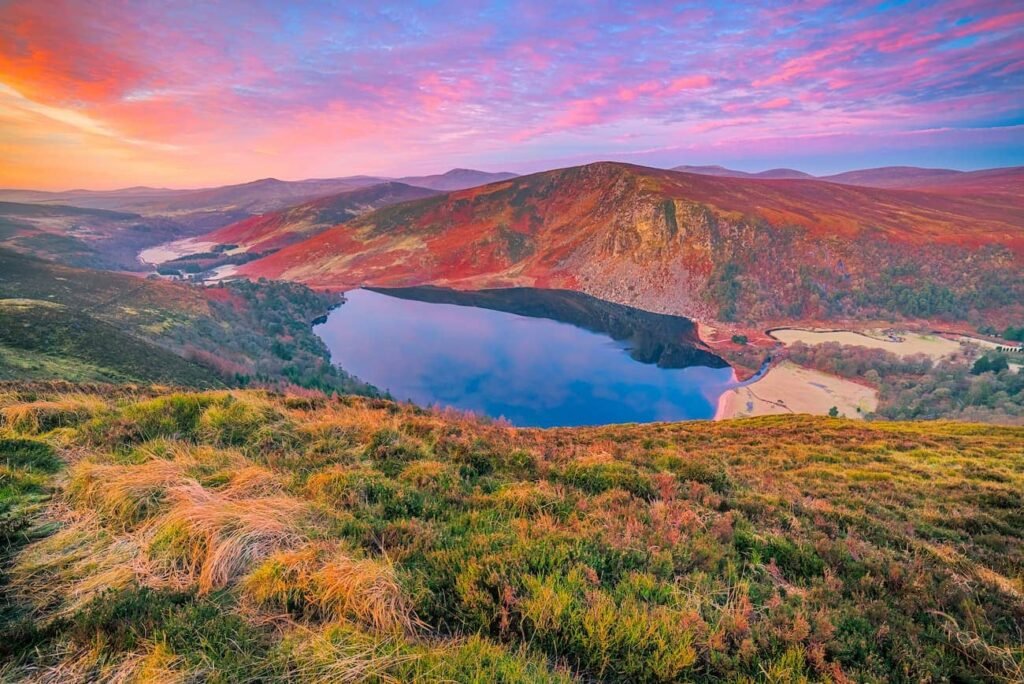
Overview
The Wicklow Mountains are renowned for their stunning landscapes, including rolling hills, lush forests, and serene lakes. Glendalough, a picturesque valley, is particularly famous for its early medieval monastic settlement and breathtaking natural scenery.
Do you want to consider other European cities? Read our 18 Best Cities to visit in Europe.
If you want to plan your travel to Dublin, Travels Jinn is with you:
- Travel Advice will help you find you the best accommodations, flights, car rentals and activities.
- Travel itinerary will craft personalized itineraries that fit your unique interests and needs.
- In addition Travels Guide is your expert pocket guide, providing real-time advice and insights, everywhere! Just ask what you wish to know and you Genie Guide will answer!
- Travel Translate and Travel Cost Tracking are additional services to make your holidays as easy and magic as possible!
Start planning today with Travels Jinn for a hassle-free and enjoyable trip!

